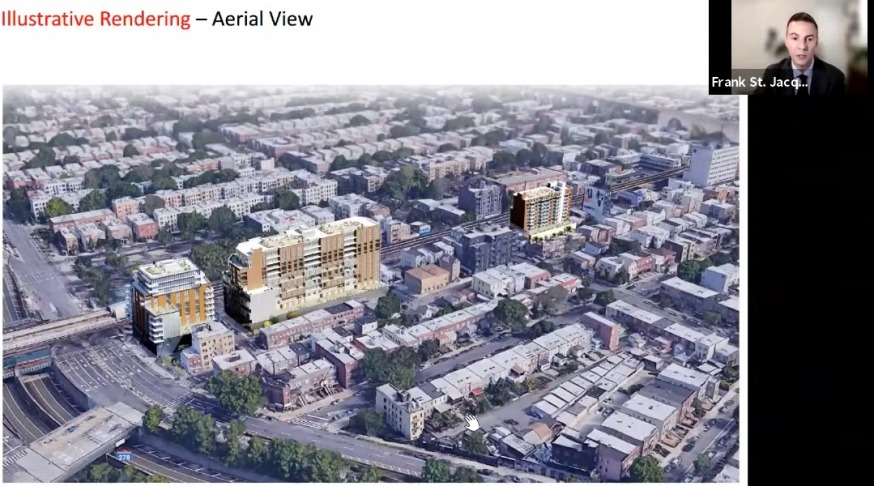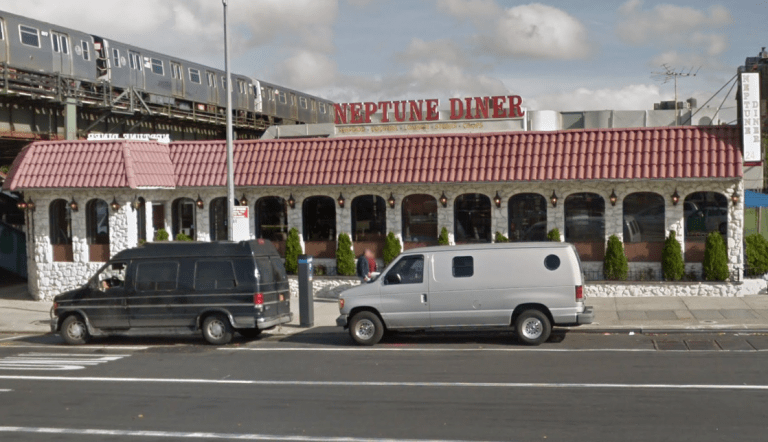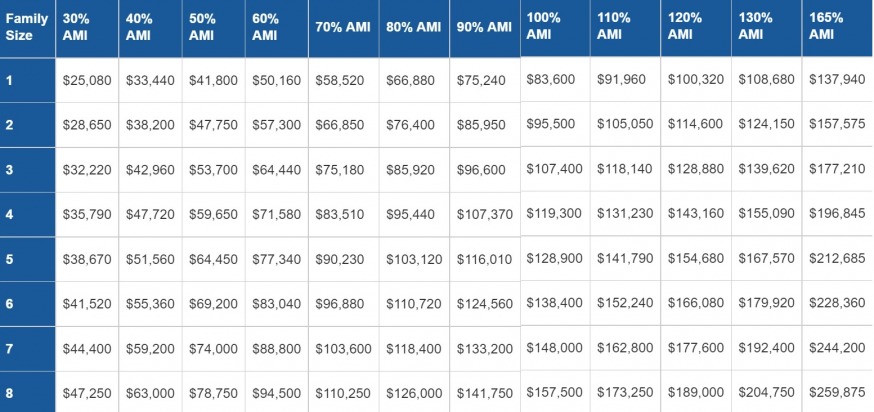
A rendering of the proposed development plan (Community Board 1 hearing)
Nov. 5, 2021 By Max Parrott
A developer’s application to rezone a section of 31st Street in Astoria — to make way for three large residential buildings — received the conditional approval of the Queens borough president last week.
Queens Borough President Donovan Richards’ approval, which he issued on Oct. 29, is at odds with mounting opposition from community leaders and elected officials. For instance, Assemblymember Zohran Mamdani and Councilmember-elect Tiffany Cabán both argue that the plan does not make provision for enough affordable housing. Furthermore, Queens Community Board 1 overwhelmingly rejected the plan.
MDM Development, an Astoria-based real estate company, has filed plans with the city to upzone the east side of 31st Street between Astoria Boulevard North and 24th Avenue in order to develop three residential buildings — two of which would be 11 stories and the other 12.
One of the buildings would go up where the Neptune Diner is located. The diner would be demolished to make way for it.

An 11-story building is proposed to go up on the Neptune Diner site in Astoria. which has been in Astoria for decades (GMaps). Two other buildings are proposed to go up on nearby sites.
The plan calls for the construction of 278 units, 69 of which would be deemed affordable housing in accordance with the city’s Mandatory Inclusionary Housing Option 1 requirement. The proposal also includes retail space and community facilities.
Richards cited the citywide need for affordable housing as a justification for his conditional approval. He approved the plan subject to a series of conditions that dealt largely with the design and construction of the development.
Richards asked the developer to consider the feasibility of lowering the heights of the buildings to address one of the central issues raised by Community Board 1. The board was concerned that the buildings would overwhelm the residential buildings located nearby.
Another condition aims to placate adjacent homeowners who fear that their property would be damaged during construction. The condition calls for the developer to run pre-construction surveys on the homes along the property line to use as a baseline in case there is a dispute pertaining to damage.
Richards also called for the developer to set up a community advisory board to provide a line of communication with surrounding residents. The newly-formed board would be required to provide residents and Community Board 1 with advance notice of any street closures adjacent to the site.
He also requested the developer hire 30 percent minority- and women-owned businesses in the construction process.

New York City Area Median Income (Source: HPD)
The 69 affordable units would be set aside for low-and-moderate income New Yorkers across a range of incomes. There would be 24 units available for households earning up to 40 percent of the Area Median Income — $42,960 for a family of three; 25 units set aside for those earning up to 60 percent AMI — $64,440 for a family of three; and 20 for those earning up to 80 percent AMI — $85,920.
The borough president’s approval comes approximately one month after Community Board 1 rejected the plan by a vote of 25 against and four in favor. The board argued that the project was too large for the area, and that it would cause hardship to residents in low-rise buildings on adjacent streets.
The plan went before the City Planning Commission for a public hearing Wednesday, during which some community members testified in support of the plan and others against it.
The speakers who opposed the plan — many of whom live near the proposed development site — argued that the area lacked the infrastructure to cater to an influx of new residents.
Some said that the development would also increase rental prices and that the affordable units are being offered at income levels too high for people truly in need.
Those in favor of the project, who tended to be from outside the immediate Astoria area, argued that the neighborhood would benefit from an increase in the supply of housing. Additionally, they argued that the community amenities would be beneficial.
Mamdani tweeted out ahead of the hearing that the proposal included no affordable housing for families who earn significantly less than $40,000, which makes it “vastly insufficient to meet our housing needs.”
Cabán, who was elected Tuesday to represent the Astoria district in the city council, is likely to have the ultimate say on the project when it goes before the council for a vote. To date, she has expressed her disapproval of the project, arguing that the housing is not truly affordable.
“The biggest problem with this project is it’s not affordable housing,” she told the Queens Post during a candidate forum held mid-October. “We have to create ultra-affordable housing to support those who are struggling.”
A major part of the incoming councilmember’s criticism stems from the city’s land use process which she called “outdated,” “purely reactive,” “heavily weighted toward developers’ interest,” and which she believes needs to be reformed.
QBP Rec ULURP 210200 ZMQ 31… by Queens Post
2 Comments







yep just like sunnyside, woodside & long island city..no thoughts to effect on infrastructure…”Community Board 1 rejected the plan by a vote of 25 against and four in favor”. but richards approves it..you get what u vote for
You continue to build these tall buildings and Astoria will lose its character.